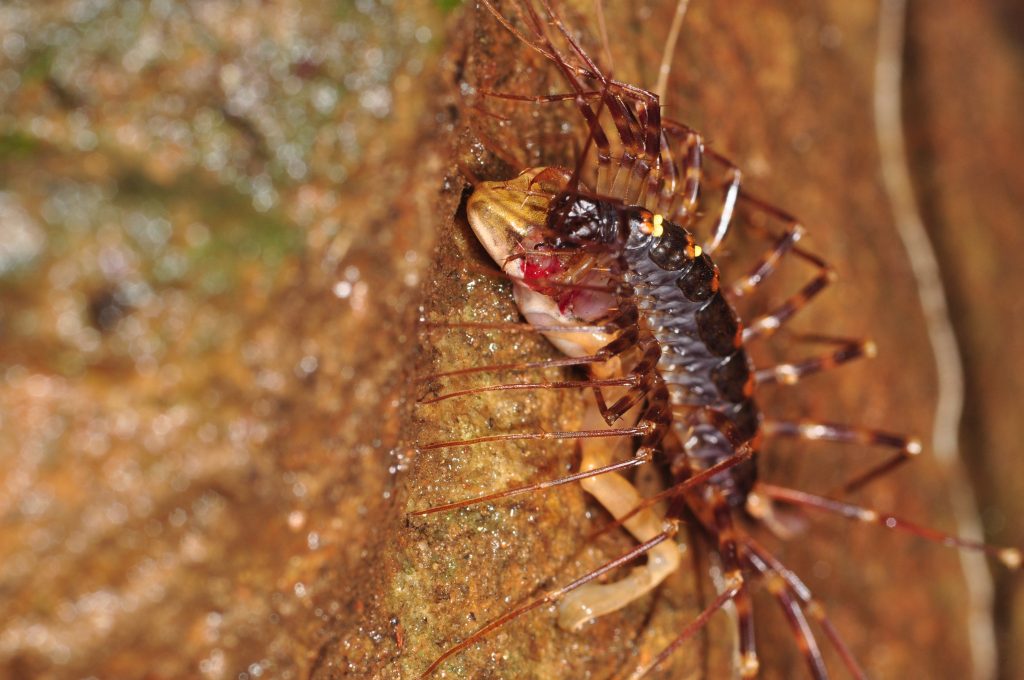 "
"
On a rainy night on 6 July 2015, we encountered an arthropod of the genus Scutigera feeding on a juvenile Western Tree Frog, Polypedates occidentalis. Commonly known as the house centipede, the Scutigera spp we saw was chewing on the eye of the froglet. We made observations for about five minutes and continued on our survey as part of the annual “Bisle frog watch” activity. The froglet seemed to be stunned with venom, as it never moved. This incident was observed near a pond in the small village of Bisle in Sakleshpura Taluk, Hassan District, Karnataka State, India.
The identity of the Scutigera spp could not be confirmed because these arthropods have not been systematically studied or examined despite being common in the forests and in households in both the Western Ghats and other parts of India.
Most amphibians are biphasic (meaning they have an aquatic tadpole stage and a terrestrial adulthood) and are vulnerable to predation in both habitats. Tadpoles or juvenile frogs are small, and are particularly susceptible to a variety of predators ranging from invertebrates to adult frogs themselves. The only report synthesizing predation by frogs and toads (anurans) is a decade old and reports about 68 species of anurans preying upon at least 57 species of invertebrates based on 300 observations (Toledo, 2005. Herpetological Review 36: 395–400).
Natural history forms the basis for understanding ecology. There is great potential to undertake experimental studies to understand how predation affects larval amphibians and may help in uncovering predator avoidance mechanisms. Rigorous understanding of natural history of a species is important to frame robust conservation policies; especially for amphibians, given that they are the most threatened vertebrates on earth.

 CI is a non-profit, non-commercial portal that aims to facilitate wildlife and nature conservation by providing reliable information and the tools needed to campaign effectively.
CI is a non-profit, non-commercial portal that aims to facilitate wildlife and nature conservation by providing reliable information and the tools needed to campaign effectively.
Chosen as 'Picture of the Week'
Rigorous understanding of the natural history of a species is important to frame robust conservation policies; especially for amphibians, given that they are the most threatened vertebrates on earth.